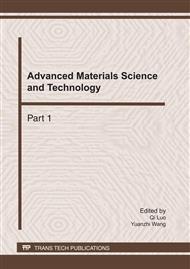[1]
Konstantinos Kotis*, George A. Vouros, Konstantinos Stergiou. Towards Automatic Merging of Domain Ontologies: The HCONE-merge Approach. Web Semantics: Science, Services and Agents on the World Wide Web 4, p.60–79, (2006).
DOI: 10.1016/j.websem.2005.09.004
Google Scholar
[2]
Tzone I. Wang , Tung Cheng Hsieh, Kun Hua Tsai, Ti Kai Chiu, Ming Che Lee. Partially Constructed Knowledge for Semantic Query. Expert Systems with Applications 36, p.10168–10179, (2009).
DOI: 10.1016/j.eswa.2008.12.030
Google Scholar
[3]
Gerd S, Alexander M. FCA-MERGE: Bottom-Up Merging of Ontologies. In: Proceedings of the 17th IJCAI, seattle, USA, pp.225-230 , (2001).
Google Scholar
[4]
D. Vallet,P. Castells,M. Fernandez,P. Mylonas Y.S. Avrithis, Personalized Content Retrieval in Context using Ontological Knowledge, IEEE Transactions, (2007).
DOI: 10.1109/tcsvt.2007.890633
Google Scholar
[5]
Ganter, B., & Wille, R. Formal concept analysis: Mathematical Foundations. Springer-Verlag Berlin, (1999).
Google Scholar
[6]
Obitko M, Sndsel V, Smid J: Ontology Design with Formal Concept Analysis. Edited by Vaclav Snasel, Radim Belohlavek. In:Proc of the CLA 2004 Intl. Workshop on Concept Lattices and their Applications Ostrava. Czech Republic. Sep, pp.111-119 , (2004).
Google Scholar
[7]
Derrick G. Kourie, Sergei Obiedkov, Bruce W. Watson, Dean van der Merwe. An incremental algorithm to construct a lattice of set intersections. Science of Computer Programming74 pp.128-142 , (2009).
DOI: 10.1016/j.scico.2008.09.015
Google Scholar
[8]
C. Carpineto, G. Romano, Concept Data Analysis: Theory and Applications, Wiley, (2004).
Google Scholar
[9]
ZHI Hui lai et al,Concept Similarity Based on Concept Lattice, Computer science, (2008).
Google Scholar
[10]
Adolfo Guzmán-Arenas*, Alma-Delia Cuevas, Knowledge Accumulation Through Automatic Merging of Ontologies, Expert Systems with Applications 37, p.1991–2005 , (2010).
DOI: 10.1016/j.eswa.2009.06.078
Google Scholar
[11]
Clyde W. Holsapple, K. D. Joshi. A Collaborative Approach to Ontology Design. Communications of the ACM, Vol. 45, No. 2, (2002).
Google Scholar
[12]
Harith Alani, Position Paper: Ontology Construction from Online Ontologies, 15th Int. World Wide Web Conference, Edinburgh, Scotland, (2006).
DOI: 10.1145/1135777.1135849
Google Scholar
[13]
Mingli FENG. Construction of User-Query Semantic Ontology (UQSO) for Personalized Topic Search Engine. Xihua University, The thesis of master degree, (2010).
Google Scholar


